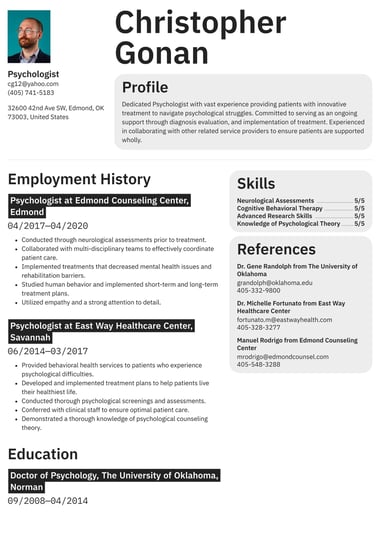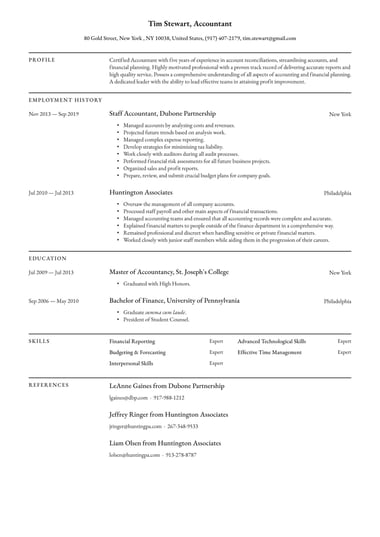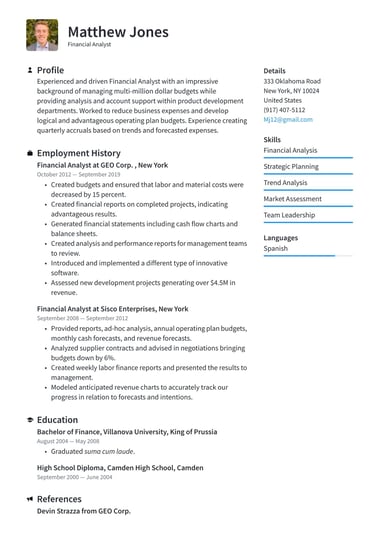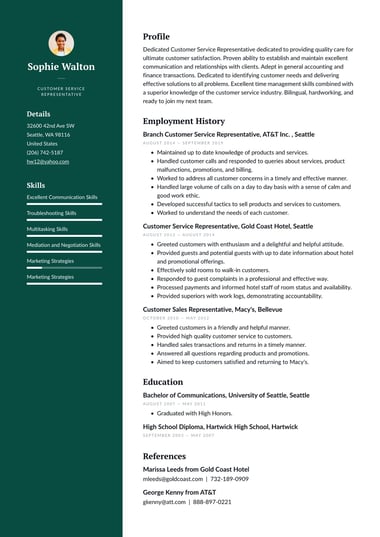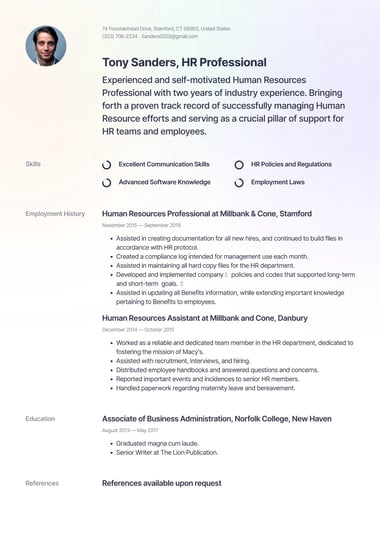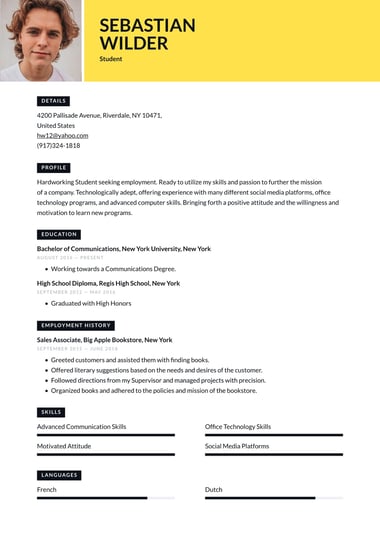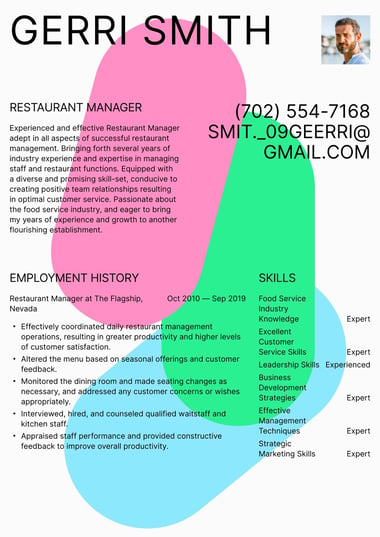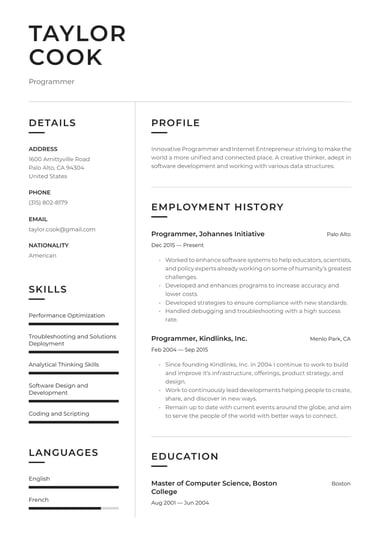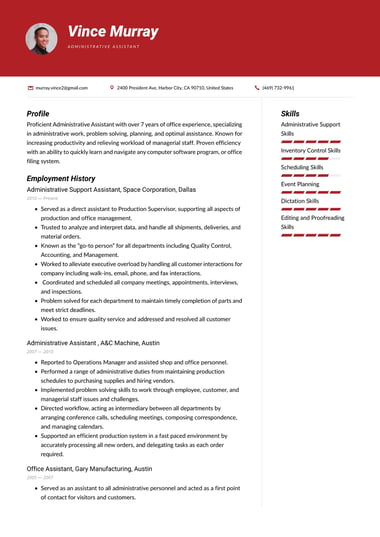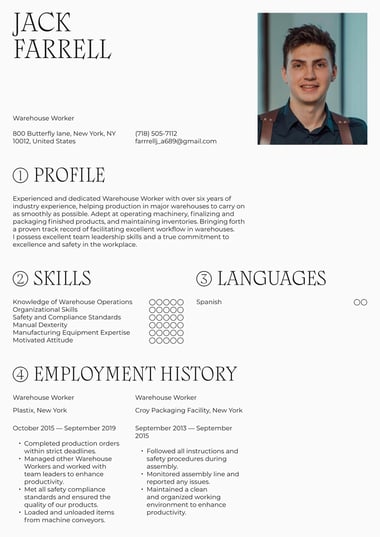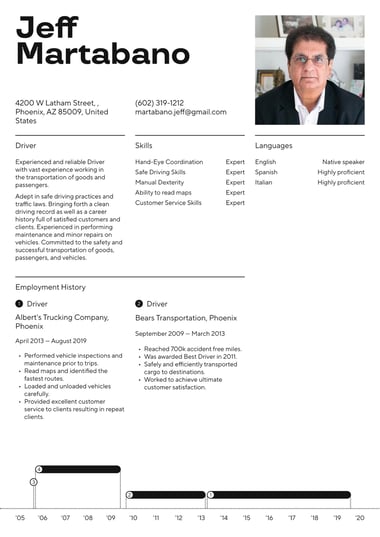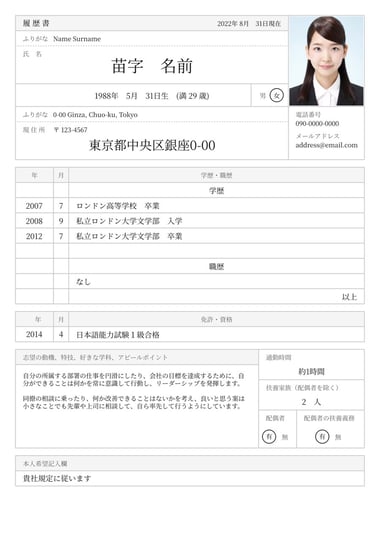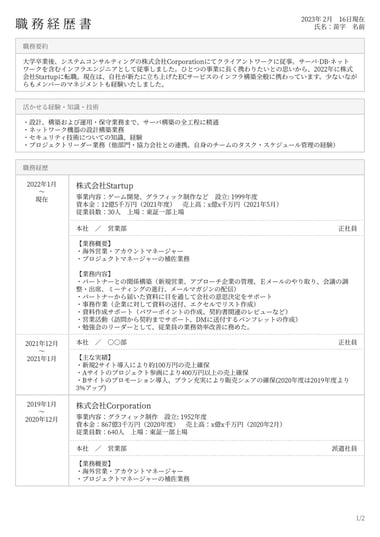What resume format is considered the most traditional?
There are three basic resume formats: reverse-chronological, functional, and hybrid. However, when you think about a “traditional” resume format, you’re most likely picturing the reverse-chronological.
A reverse-chronological resume lists the work experience with the most recent job first, and works backward. It contains the following sections, generally in this order:
- Contact information: name, phone, email, city and state, and LinkedIn or online portfolio URL.
- Professional summary: a two to three sentence overview of an applicant's most important skills, expertise, and accomplishments.
- Skills: a list of relevant hard and soft skills.
- Work History: an overview of jobs starting with the most recent.
- Education: lists the name of the school, location, and degree.
- Other relevant information: this could contain certifications, licenses, languages spoken, or older work experience.
The classic reverse chronological is especially useful for those who have a clearly-defined career path, as it shows a linear progression from the start of a person’s career to the present day.
This format and style are also concise and easy to read, with the candidate’s information placed in a straightforward, logical order.
It also tends to be ATS-friendly, as the systems can easily parse the information, increasing the chances your resume lands in the hands of a recruiter.
Formatting your resume in a classic reverse-chronological order highlights your commitment to your career trajectory, current skills, and achievements.
Are traditional resumes effective?
Yes, they are. Traditional resumes, such as the reverse-chronological with a classic style, are the most common, and the ones that hiring managers and recruiters are most used to seeing.
Traditional, classic resumes are commonly used in fields such as finance, law, healthcare, and education, where a straightforward narrative of a candidate’s career trajectory is highly valued.
The effectiveness of traditional resumes is due to the following factors:
- It looks professional: a traditional resume avoids distracting elements often found in more modern or creative templates, ensuring your experience and skills take center stage.
- It’s customizable: the straightforward layout of a traditional resume allows the candidate to easily tailor it for each job they’re applying for.
- They are familiar and consistent: hiring managers are accustomed to the traditional format and can easily skim to find the information they need.
- It is concise yet detailed: the traditional format allows for a thorough encapsulation of a candidate’s career and includes skills, accomplishments, and overall experience.
Pros and cons of a traditional resume
Before deciding if a traditional resume is right for you, consider the following:
Pros
- Easy for recruiters to follow and understand due to the straightforward layout.
- They work well with Applicant Tracking Systems ( ATS resume).
- Are preferred in industries where a formal presentation is expected.
Cons
- Depending on the field, they may appear less creative or innovative compared to modern designs.
- Can make it harder to stand out in a competitive job market.
- Not ideal for roles that emphasize design or personal creativity
Classic resume examples for specific jobs
If you’re still wondering if a traditional resume is right for you, it might help to look at a few examples from resume.io’s library of resume templates.
London template
Classic and streamlined, this traditional resume is perfect for the academic looking to highlight educational accomplishments and skills.
Santiago template
Clean, clear, and easy to read, this traditional resume is perfect for the car sales professional with its clearly defined sections and plenty of room for sales achievements to stand out from the crowd.
Athens template
With a simple, straightforward layout and pop of color, this traditional resume shows off accomplishments and skills to take the field sales representative to the next level of their career.

